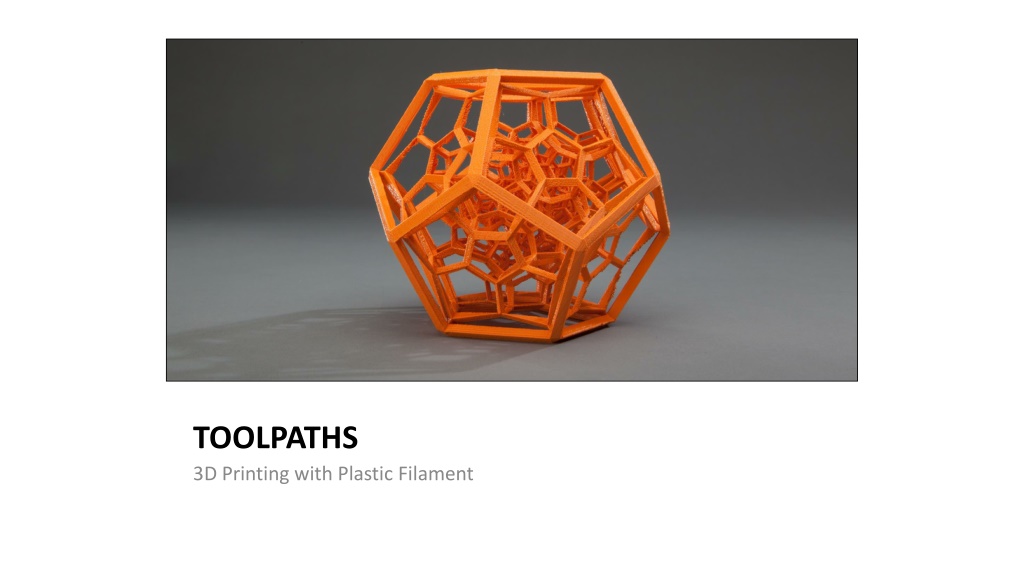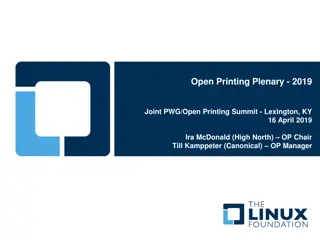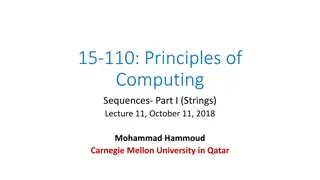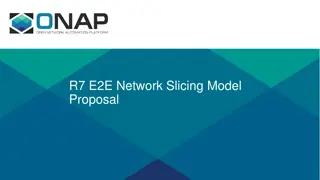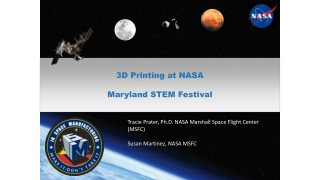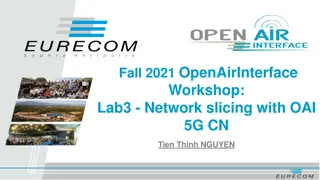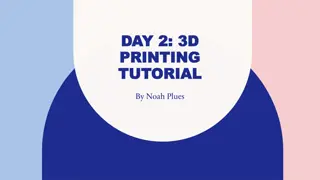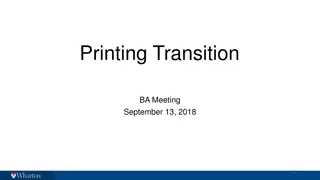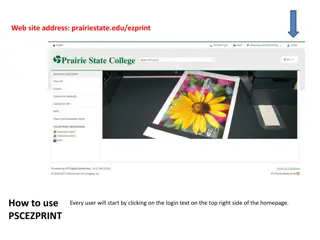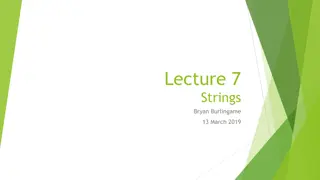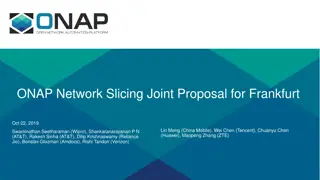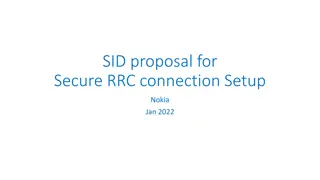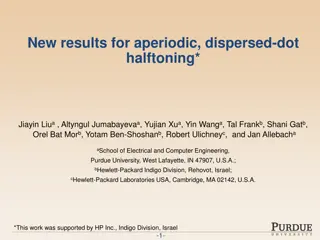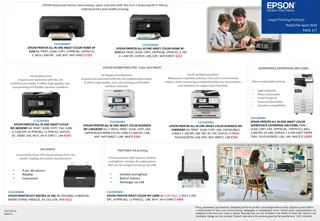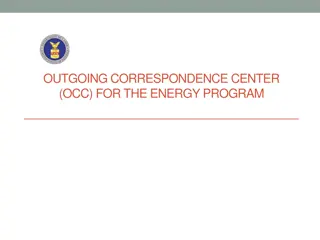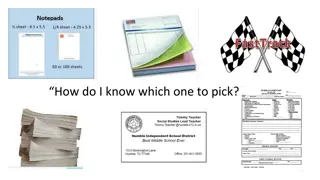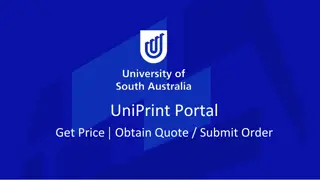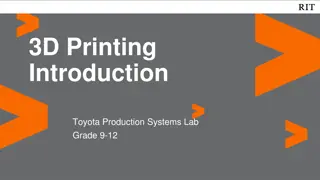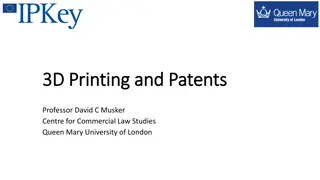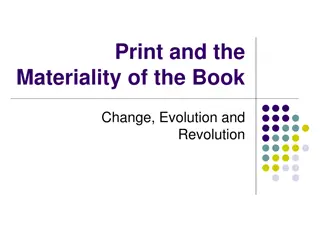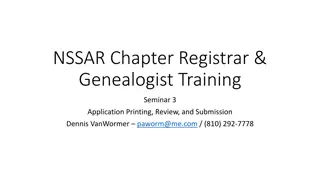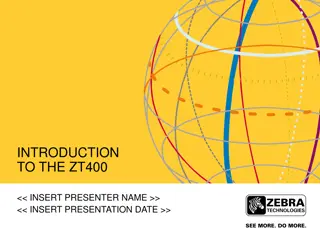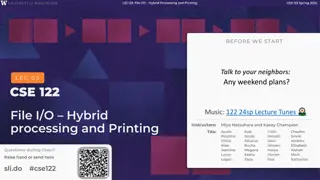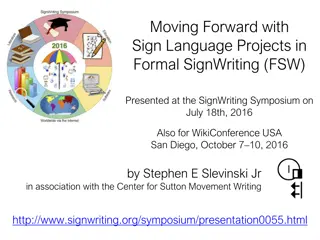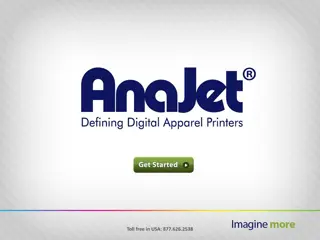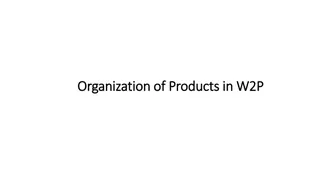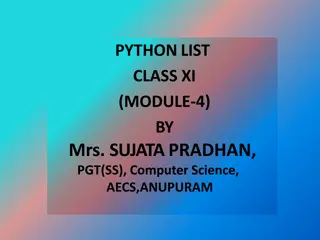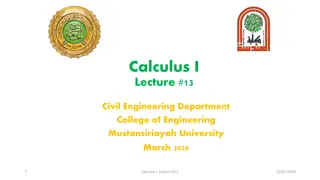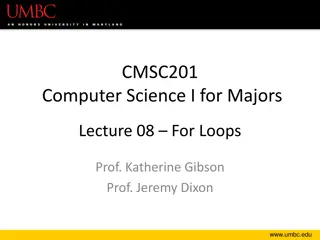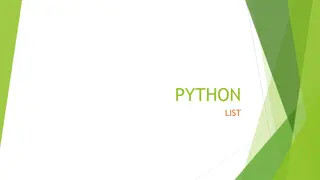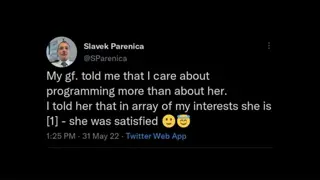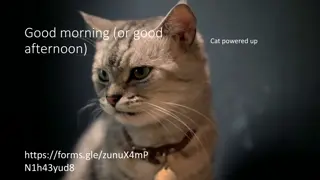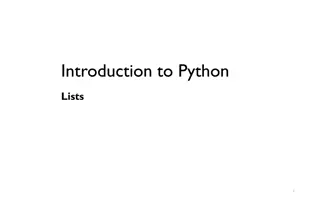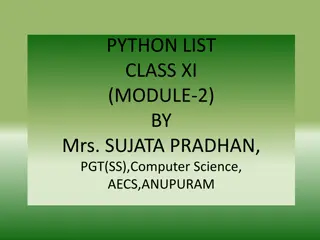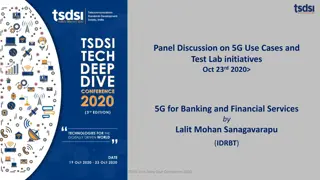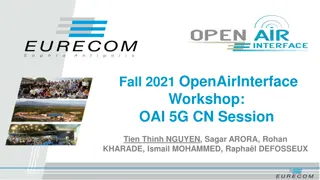Understanding Toolpaths and Slicing in 3D Printing
Explore toolpaths, slicing techniques, and optimization methods in 3D printing with plastic filament. Learn about uniform slicing, volume error minimization, adaptive slicing, and locally adaptive slicing for efficient and high-quality printing results. Discover how advanced strategies can enhance printing precision and speed.
Download Presentation

Please find below an Image/Link to download the presentation.
The content on the website is provided AS IS for your information and personal use only. It may not be sold, licensed, or shared on other websites without obtaining consent from the author. Download presentation by click this link. If you encounter any issues during the download, it is possible that the publisher has removed the file from their server.
E N D
Presentation Transcript
TOOLPATHS 3D Printing with Plastic Filament
+E -X +X +Z CC BY-NC-ND sylvain.lefebvre@inria.fr
Slicing CC BY-NC-ND sylvain.lefebvre@inria.fr
Uniform slicing Fixed thickness (typically from 0,1 to 0,3 mm) Z (up) axis CC BY-NC-ND sylvain.lefebvre@inria.fr
Slice plane [Cute Octopus Says Hello (MakerBot) / CC BY 3.0] CC BY-NC-ND sylvain.lefebvre@inria.fr
Upon printing extruder Slice slab Z (up) axis CC BY-NC-ND sylvain.lefebvre@inria.fr
Volume error Z (up) axis CC BY-NC-ND sylvain.lefebvre@inria.fr
Minimizing volume error Optimization Minimize volume error? Variables: Object orientation! Slice thicknesses CC BY-NC-ND sylvain.lefebvre@inria.fr
Adaptive slicing Same number of slices CC BY-NC-ND sylvain.lefebvre@inria.fr
Adaptive slicing [Cute Octopus Says Hello (MakerBot) / CC BY 3.0] CC BY-NC-ND sylvain.lefebvre@inria.fr
Adaptive slicing [Cute Octopus Says Hello (MakerBot) / CC BY 3.0] CC BY-NC-ND sylvain.lefebvre@inria.fr
Adaptive slicing Faster for same precision Do not waste time in simple regions Not so easy to determine best strategy See survey by [P.M. Pandey et. al. 2003] Recent work: [Wang et. al. 2015] Saliency preserving slicing CC BY-NC-ND sylvain.lefebvre@inria.fr
Locally adaptive slicing Slic3r : micro-layering IceSL : nested slices CC BY-NC-ND sylvain.lefebvre@inria.fr
Toolpaths [Cute Octopus Says Hello (MakerBot) / CC BY 3.0] CC BY-NC-ND sylvain.lefebvre@inria.fr
Shells Infill Perimeter Cover CC BY-NC-ND sylvain.lefebvre@inria.fr
Erosion (morphological) Structuring element (nozzle exit hole) Slice CC BY-NC-ND sylvain.lefebvre@inria.fr
Erosion (morphological) Structuring element (nozzle exit hole) Erosion: All points where structuring element is entirely included CC BY-NC-ND sylvain.lefebvre@inria.fr
Perimeter Visible part of the filament Object contouring Erosion! (top view) CC BY-NC-ND sylvain.lefebvre@inria.fr
Plastic flow How much plastic to push? Millimeters of filament (E axis) E axis FA Nozzle diameter L Layer height Filament diameter Layer height x Nozzle diameter x L Length to push = FA CC BY-NC-ND sylvain.lefebvre@inria.fr
Thin features Disappears!!! CC BY-NC-ND sylvain.lefebvre@inria.fr
Thin features ???? CC BY-NC-ND sylvain.lefebvre@inria.fr
A possible approach Skeleton CC BY-NC-ND sylvain.lefebvre@inria.fr
A possible approach CC BY-NC-ND sylvain.lefebvre@inria.fr
Arbitrary decision (user?) CC BY-NC-ND sylvain.lefebvre@inria.fr
Shells Note the gaps More of the same Might become thin CC BY-NC-ND sylvain.lefebvre@inria.fr
Infills Top / bottom covers Inside Full infill (very robust, slow, lots of plastic) Sparse infill (save plastic and time, less strong) CC BY-NC-ND sylvain.lefebvre@inria.fr
100% Infill CC BY-NC-ND sylvain.lefebvre@inria.fr
100% Infill ??? CC BY-NC-ND sylvain.lefebvre@inria.fr
Flow control Limited change of thickness Might not adhere 25% 100% 50% CC BY-NC-ND sylvain.lefebvre@inria.fr
100% Infill CC BY-NC-ND sylvain.lefebvre@inria.fr
Speed Faster! Both axis work together: better acceleration CC BY-NC-ND sylvain.lefebvre@inria.fr
Sparse Infill Simple approach CC BY-NC-ND sylvain.lefebvre@inria.fr
Sparse Infill Squish! CC BY-NC-ND sylvain.lefebvre@inria.fr
Sparse Infill An improved variant: Could be slow to print Resonance CC BY-NC-ND sylvain.lefebvre@inria.fr
Sparse Infill An improved variant: CC BY-NC-ND sylvain.lefebvre@inria.fr
Many other variants CC BY-NC-ND sylvain.lefebvre@inria.fr
Improving sparse infill ? Tradeoff between: Strength vs Plastic consumption Time and printability (favor straight, diagonal lines) Recent works: [Wang et al. 2013] Cost effective printing [Lu et al. 2014] Build to last Slic3r 3D honeycomb Generates a 3D cellular pattern CC BY-NC-ND sylvain.lefebvre@inria.fr
New 3D infills Just released :-) [3D infills, Sylvain Lefebvre, CC BY 4.0] See http://sylefeb.blogspot.fr/ CC BY-NC-ND sylvain.lefebvre@inria.fr
